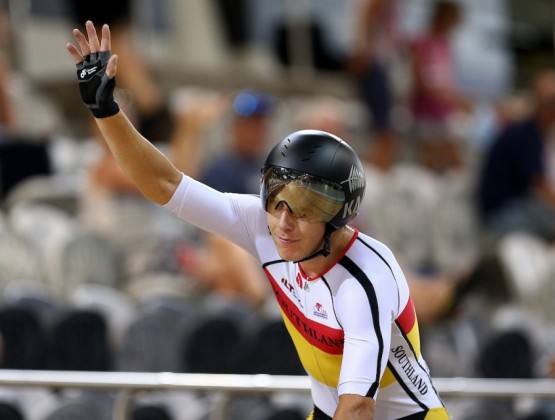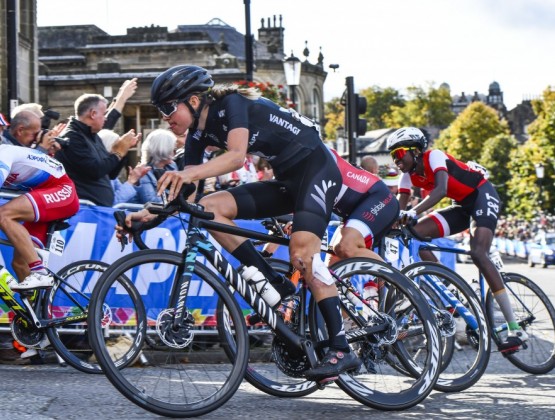Road, Track & Cyclocross


About Road & Track
Track cycling has been around since at least 1870. Since 1990, international velodromes are built with a length of 250 meters and more and more are focussing on indoor tracks which also enable year-round cycling.
With the exception of the 1912 Olympics, track cycling has been featured in every modern Olympic Games. Women's track cycling events were first included in the modern Olympics in 1988.
Track bikes are light, fast and aerodynamic and have what is known as fixed-gears with no braking system. Some of the best track cyclists can reach speeds of up to 80kms per hour and there are many different track cycling events for both individuals and teams such as Sprint and Keiren which are speed events to endurance events such, individual and teams pursuit, madison and omnium.
Road bicycle racing is the cycle sport discipline of road cycling. Road racing is the most popular professional form of bicycle racing, in terms of numbers of competitors, events and spectators. The two most common competition formats are mass start events, where riders start simultaneously (though sometimes with a handicap) and race to set finish point; and time trials, where individual riders or teams race a course alone against the clock. Stage races or "tours" take multiple days and consist of several mass-start or time-trial stages ridden consecutively.
For both Road and track joining a Club is a great way to become involved, find out the latest information and meet passionate, like-minded people.
Road- Introduction to bunch riding
- The front riders of the bunch should slow or stop the bunch at intersections
- The last riders in the bunch should check for traffic and call "clear" for lane changes to the rest of the bunch
- Call out hazards such as potholes, glass, debris etc, as soon as you see it
- Maintain safe spacing in the bunch, don't ride too close, and don't drift off the back of the wheel in front
- Do not overlap the wheel in front of you (half-wheeling)
- Brake smoothly not sharply. Call out "slowing" or "stopping" if necessary to alert other riders
- Always look straight ahead, even if talking to the rider next to you
- "Rollover" "take a turn" or "swap over" smoothly. Communicate to the rider next to you, and move to the left (or right, if you are on the right side). Indicate to the pair behind you by saying "lapping" or moving your elbow out. In windy conditions, the visual indicator is best as riders may not hear you.
Road riding etiquette & safety
- Obey ALL road rules - lights, crossings, stop/give way signs etc. A bike is a vehicle by law and must adhere to New Zealand Road Rules.
- While it is legal to ride two abreast, common sense dictates that single-file may be safer in some areas.
- Be aware of your own actions, and those of other riders and road users around you.
- Make other road users aware of your actions by signalling before stopping, turning, or changing direction.
Track- Introduction to Track
The first step towards riding track is learning to ride a track bike.
Track bikes are simple machines built for racing. There are no brakes, no gears and no freewheel. If the back wheel is turning, so are the pedals. Speed is controlled by pedalling and by pushing back on the moving pedals. Remember to just keep pedalling!
The different coloured lines on a velodrome track designate different lanes.
TRACK MARKINGS
The Blue Band is between the apron (the flat area around the bottom), and the banking. This area is out-of-bounds and represents the inside edge of the track for racing. Sponges are sometimes put on this area to prevent riders riding too low during races.
The BlackLine is the shortest distance around the track, you will see pursuit riders trying to stay as close to this line as possible.
The Red Line is the sprinter's line, which is used to define the sprinter's lane between the red and black lines.
The Blue Line is called the stayers line. Slower riders should stay above this line while warming up and training, allowing faster riders the lower part of the track.
There are also four lines perpendicular to the track. The finish line for massed start events is on the home straight just before the first corner. There is a red starting line in the middle of each straight, used for timed events. There is also a mark 200m from the finish line that is used in the timing of sprints.
GENERAL TRACK SAFETY
-
Helmets must be worn at all times when riding at the track
-
If a session is in progress, report to the person running the session before riding on the track.
-
When warming up, stay above the blue lines, leaving the lower part of the track clear for riders doing efforts
-
Do not cross the track when the track is in use.
-
Be responsible for your safety and the bike you are riding. Make sure everything is tight, in good order, and tyres glued/fitted and inflated correctly.
Track Events - Scratch Race
